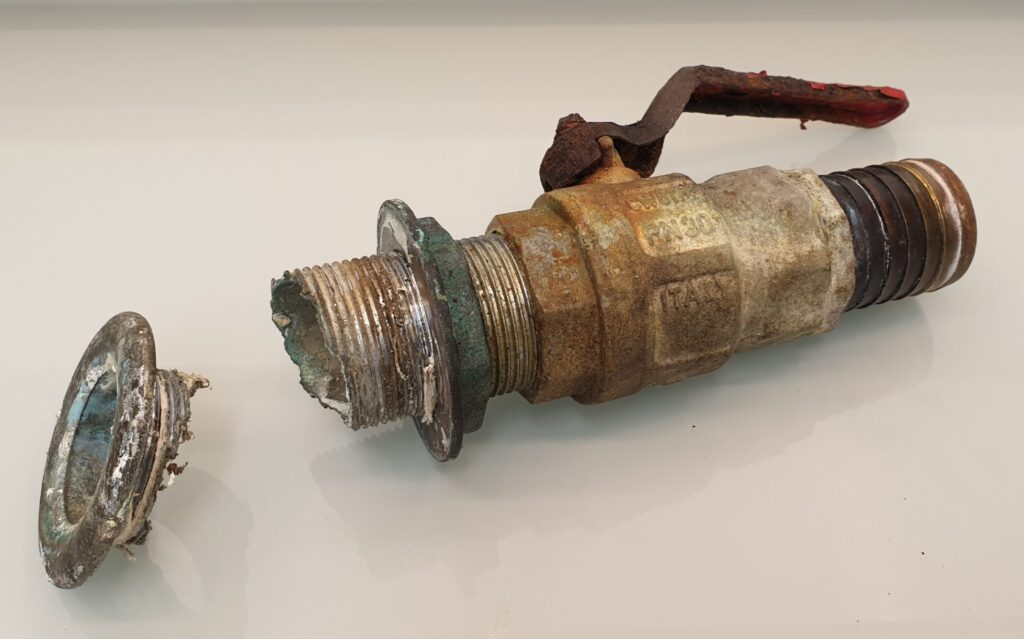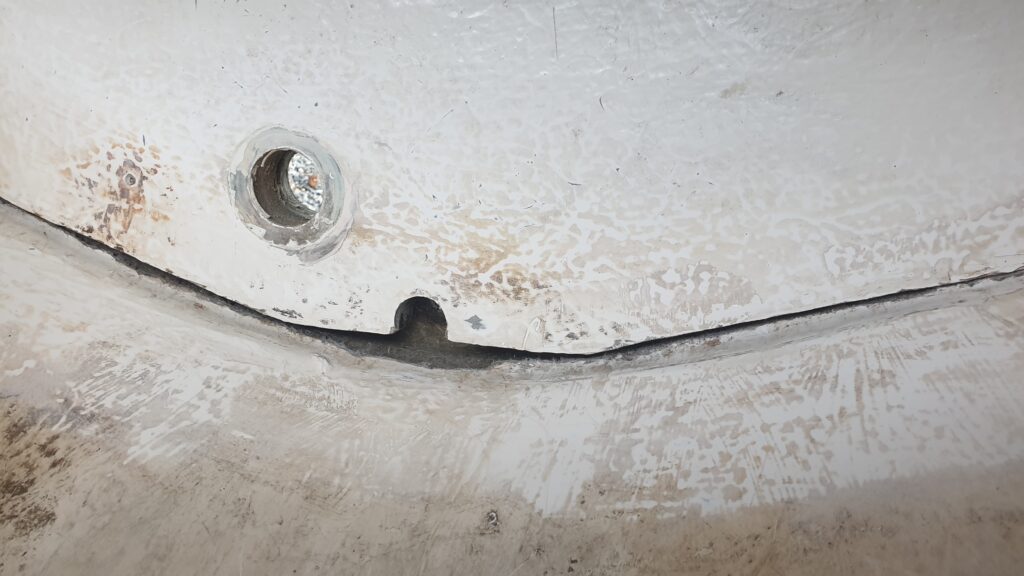
A 6 meters long open motorboat with an outboard engine lay completely under water in a protected marina. But the cause to the breakdown seemed like a mystery. The boat was lifted and drained. No no holes or leakage could be found by the salvages. The most frequently discussed theory to why the boat sank was that a heavy rainfall had caused the self-draining to take in water from the sea backwards. The suspected reason was that the hull cloth that the boat was moored to had clogged the outlet. This was in turn due to heavy wind against the stern.
Anyway, the insurance company paid for the boat. About 1 year later the fault was found. It had nothing to do with the hull cloth.

The hull grommet made of chrome-plated dezincification resistant brass (AMC-metall) was shown at removal to be completely broken inside the stern. The question was how it could break in that position? The answer was a manufacturing defect in the stern bulkhead.

As can be seen in the picture above, the fit of the bulkhead to the bottom was poor. The bulkhead was also not laminated to the bottom. This caused the hull grommet to take the load when the stern moved during throttle. The breakage in the hull grommet was corroded. It showed that the fault could not have occurred suddenly. It had been “processed” duing several years.
Frost bursting of the grommet could be dismissed, since the water from the self-draining runs out and the boat hadn´t freezed in the marina. However, frost bursting can occur in the column between stern bulkhead and the bottom. This could have been a contributing cause to the delamination of the lower edge of the stern bulkhead, which gradually increased the flexibility in the stern bulkhead. In this case, a crack had been formed in the hull grommet material, most probably due to a weakening in the material since casting. The crack had then been freely exposed to salt water corrosion. The chrome plating of the brass hullet does not protect in such a case.
Finally the hullet broke due to both corrosion and bendings during throttle. The breakdown was then a fact. It was nice that this happened in the marina instead of at sea! Information about hull grommets, ball valves and corrosion is gathered below. The recommendation to kick at the hull grommets to see if they break is firmly recommended against. To judge the color of the grommet as a guarantee of function is very doubtful, considering the different color casts that brass can have. Instead, look for cracks that can be discovered by verdigris of copper oxide and inspect the hull grommet!
